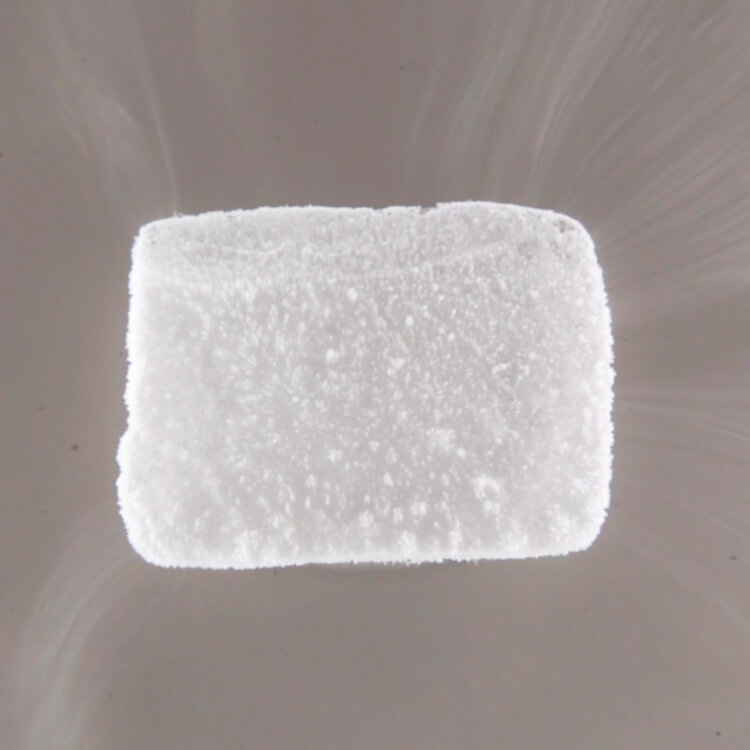


In this experiment, we'll use dry ice (solid carbon dioxide, CO2) to investigate what happens when a solid turns directly into a gas, a process known as sublimation. Because dry ice is extremely cold and can potentially be dangerous, this experiment requires adult supervision. Never touch dry ice with your bare hands for more than a few seconds.
Sublimation is much different than what we're used to seeing from a solid: can you imagine ice in a glass of water turning directly into steam? It turns out that dry ice undergoes sublimation because the pressure of earth's atmosphere simply isn't strong enough for carbon dioxide to exist as a liquid.
With adult supervision, and using the oven mitts to prevent any skin contact with the dry ice, place the ice on a hard, smooth surface. Never place dry ice on a surface that can be damaged by extreme temperatures or condensation. Observe what's happening to the dry ice. Is it just sitting still and slowly melting, or is something interesting going on?
Give one of the oven mitts to a labmate (your adult helpers work too!) so that you each have one to protect your hands.
And now, it's time to play dry ice air hockey. Take turns passing, shooting, and dribbling with the dry ice "puck." The CO2 gas that sublimes as the block of dry ice warms up should help the dry ice glide smoothly across the surface, almost as if it were on an air hockey table.
You must be logged in to comment.